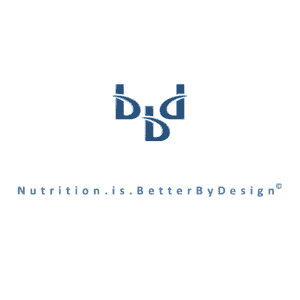NOTE: This article was originally posted on August 20, 2023, and was revised and reposted on November 2, 2025. It now includes the latest research on protein quality and bioavailability.
Introduction
Some people are considering going “plant-based” for perceived health reasons or for ethical considerations, and while these are important, evaluating plant protein quality is also necessary. Assessing protein quality using the Digestible Indispensable Amino Acid Score (DIAAS) can help identify the best sources of protein for maintaining and building muscle.
A recent study found that essential amino acids from animal protein are more bioavailable than those from plant protein [1]. These findings are especially important for older adults who need to preserve muscle mass, and for active adults wanting to build or repair muscle.
Amino Acids and Bioavailability
Amino acids are the building blocks of protein, including muscle. There are twenty amino acids, divided into two groups: essential amino acids (EAA) and non-essential amino acids. Bioavailability refers to the degree to which essential amino acids in food can be used by the body to build its own proteins [2], such as muscle tissue.
Essential amino acids, including leucine, must be consumed in the diet because the body cannot make them. Leucine plays a key role in muscle growth and repair by triggering mTOR signaling in muscle cells, which stimulates protein synthesis [3].
Dietary recommendations for older adults emphasize obtaining about 2.3 g of leucine per meal to support muscle growth [4], and around 3 g per meal to rebuild muscle after exercise [5]. Recent research suggests a practical target range of 2.5–3.0 g of leucine per main meal, roughly equivalent to 25–30 g of high-quality protein. This level best supports muscle protein synthesis in older adults and enhances recovery when paired with light resistance exercise.
Plant Protein vs. Animal Protein for Building Muscle
Plant proteins generally contain lower levels of leucine than animal proteins [6]. People choosing a more plant-based diet often rely on legumes like beans or lentils for protein. However, most legumes are incomplete proteins, meaning they lack one or more essential amino acids. For example:
- Lentils contain about 0.7 g of leucine per half cup.
- Chickpeas contain about 0.42 g of leucine per half cup.
An older adult would need to eat more than 3 cups of lentils or 5½ cups of chickpeas at one meal to reach the 2.3 g leucine threshold needed to trigger muscle protein synthesis.
Is Plant Protein Equivalent to Animal Protein?
A randomized, investigator-blinded, crossover study was conducted with both young and older adults [1]. Researchers compared ounce-equivalents (oz-eq) of animal-based protein (lean pork or whole eggs) with plant-based protein (black beans or sliced almonds) in a mixed meal. The goal was to determine how efficiently the body uses amino acids from each source.
The Dietary Guidelines for Americans (DGA) defines ounce-equivalents to identify protein foods with similar nutritional content [7]. However, the researchers noted that the assumption of “equivalence” between these sources is questionable. For instance, one ounce-equivalent of pork loin provides about 7 g of protein, while one ounce-equivalent of almonds provides only 3 g [1]. Beyond quantity, protein quality — the digestibility and bioavailability of essential amino acids — also differs substantially between these sources.
The Bioavailability of Plant Protein – DIAAS
In 2013, the Food and Agriculture Organization (FAO) introduced the DIAAS method to replace the older PDCAAS system for assessing protein quality [9]. DIAAS measures how well individual essential amino acids are digested and absorbed at the end of the small intestine, giving a clearer picture of how well the protein supports the body’s needs.
High-quality proteins have a DIAAS ≥100, while scores of 75–99 are considered good, and <75 cannot make a quality protein claim [8].
- Most grains and legumes score below 75.
- Pea and soy protein range from 75–100.
- Animal proteins such as beef typically score well above 100 [10].
Final Thoughts…
If you are an active adult wanting to build and repair muscle, or an older adult aiming to maintain strength, it’s essential to choose high-quality proteins that contain all essential amino acids — especially leucine. While the DGA lists one ounce of meat, one egg, 0.25 cups of beans, or 0.5 ounces of nuts as equivalent, this study shows they are not truly equivalent in quality or bioavailability.
For those following a vegetarian or vegan diet for ethical or cultural reasons, combining complementary plant proteins and choosing higher-DIAAS options like soy or pea protein can help you meet your needs. If you would like support ensuring that you or someone you love eats sufficient high-quality protein to trigger muscle synthesis, please reach out.
To your good health,
Joy
You can follow me on:
Twitter (X): https://x.com/jyerdile
Facebook: https://www.facebook.com/BetterByDesignNutrition/
References
- Connolly, G., Hudson, J. L., Bergia, R. E., et al. (2023). Effects of Consuming Ounce-Equivalent Portions of Animal- vs. Plant-Based Protein Foods, as Defined by the Dietary Guidelines for Americans, on Essential Amino Acid Bioavailability in Young and Older Adults: Two Cross-Over Randomized Controlled Trials. Nutrients, 15(13), 2870. [https://doi.org/10.3390/nu15132870]
- Gaudichon, C., & Calvez, J. (2021). Determinants of Amino Acid Bioavailability from Ingested Protein in Relation to Gut Health. Curr Opin Clin Nutr Metab Care, 24(1), 55-61. [https://pubmed.ncbi.nlm.nih.gov/33093304/]
- Norton, L. E., & Layman, D. K. (2006). Leucine Regulates Translation Initiation of Protein Synthesis in Skeletal Muscle after Exercise. J Nutr, 136(2 Suppl), 533S–537S. [https://www.sciencedirect.com/science/article/pii/S0022316622080956]
- Bauer, J., Biolo, G., Cederholm, T., et al. (2013). Evidence-Based Recommendations for Optimal Dietary Protein Intake in Older People: A Position Paper from the PROT-AGE Study Group. J Am Med Dir Assoc, 14(8), 542–59. [https://pubmed.ncbi.nlm.nih.gov/23867520/]
- Thomas, D. T., Erdman, K. A., & Burke, L. M. (2016). American College of Sports Medicine Joint Position Statement: Nutrition and Athletic Performance. Med Sci Sports Exerc, 48(3), 543–568. [https://pubmed.ncbi.nlm.nih.gov/26891166/]
- Berrazaga, I., Micard, V., Gueugneau, M., & Walrand, S. (2019). The Role of the Anabolic Properties of Plant- versus Animal-Based Protein Sources in Supporting Muscle Mass Maintenance: A Critical Review. Nutrients, 11(8), 1825. [https://pubmed.ncbi.nlm.nih.gov/31394788/]
- U.S. Department of Agriculture and U.S. Department of Health and Human Services. (2020). Dietary Guidelines for Americans, 2020–2025, 9th ed. [https://www.dietaryguidelines.gov]
- Herreman, L., Nommensen, P., Pennings, B., & Laus, M. C. (2020). Comprehensive Overview of the Quality of Plant- and Animal-Sourced Proteins Based on the Digestible Indispensable Amino Acid Score. Food Sci Nutr, 8(9), 5379–5391. [https://doi.org/10.1002/fsn3.1809]
- Food and Agriculture Organization of the United Nations. (2013). Dietary Protein Quality Evaluation in Human Nutrition. [https://www.fao.org/3/i3124e/i3124e.pdf]
- Marinangeli, C. P. F., & House, J. D. (2017). Potential Impact of the Digestible Indispensable Amino Acid Score as a Measure of Protein Quality on Dietary Regulations and Health. Nutr Rev, 75(8), 658–667. [https://pubmed.ncbi.nlm.nih.gov/28969364/]

© 2025 BetterByDesign Nutrition Ltd.

